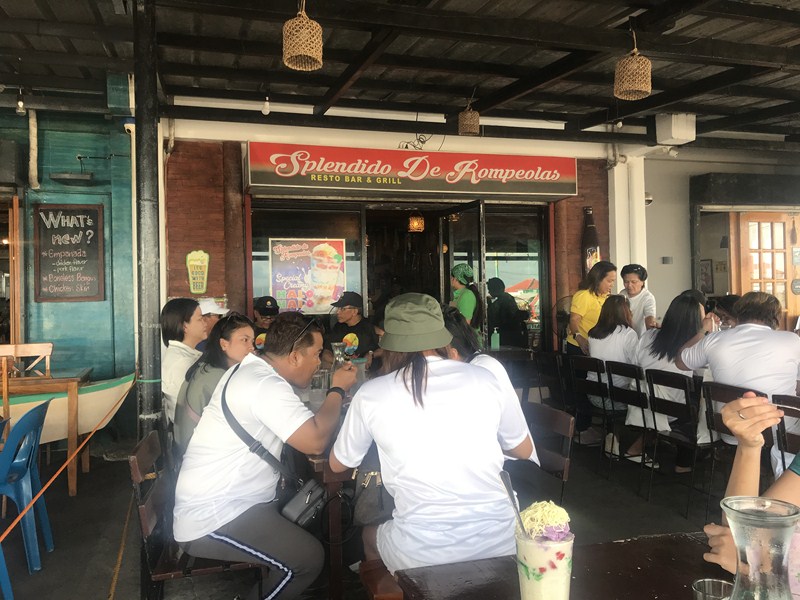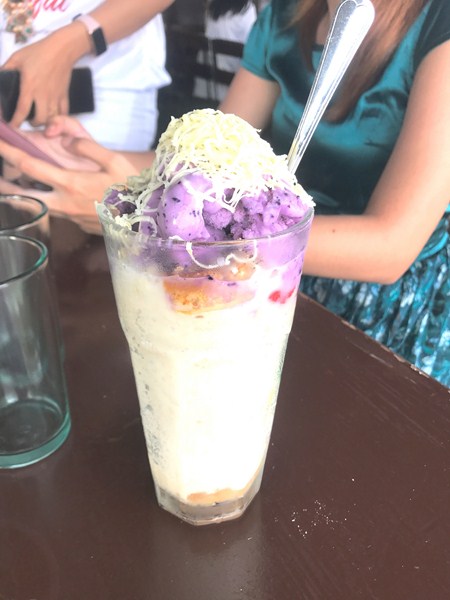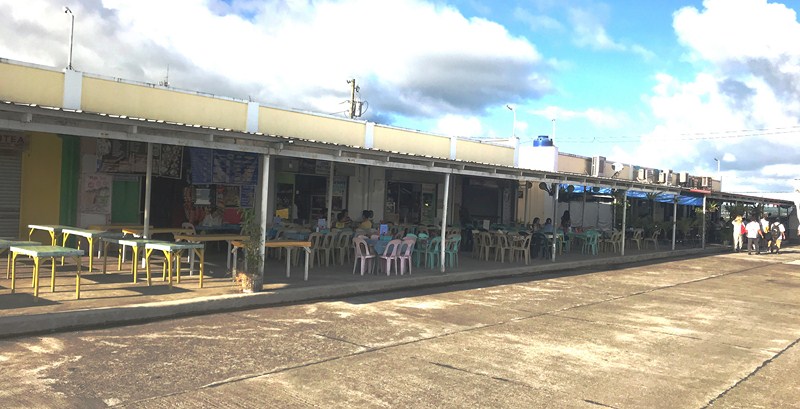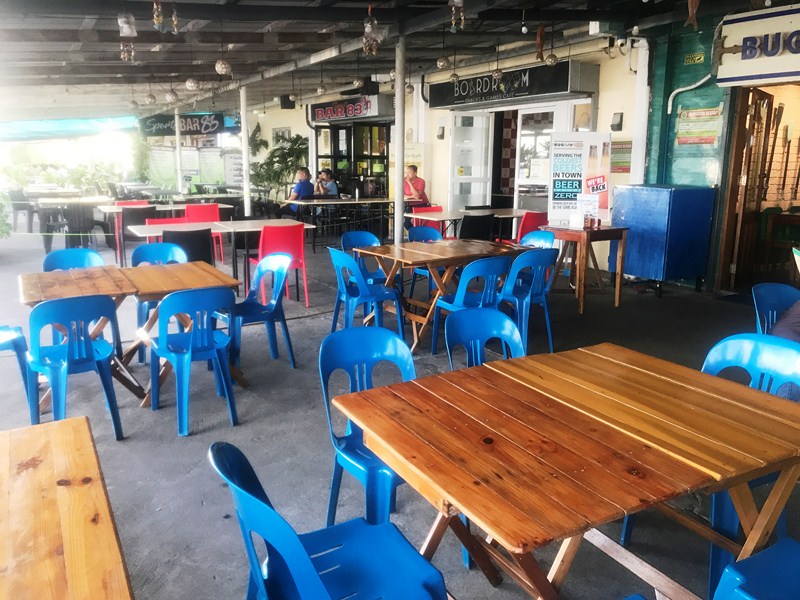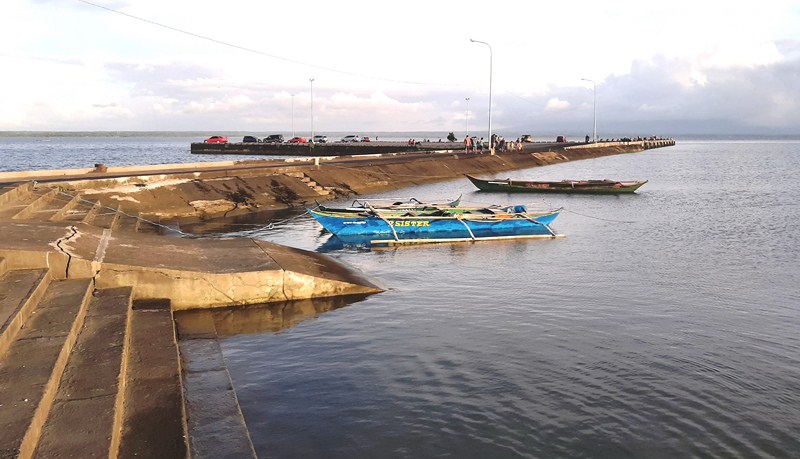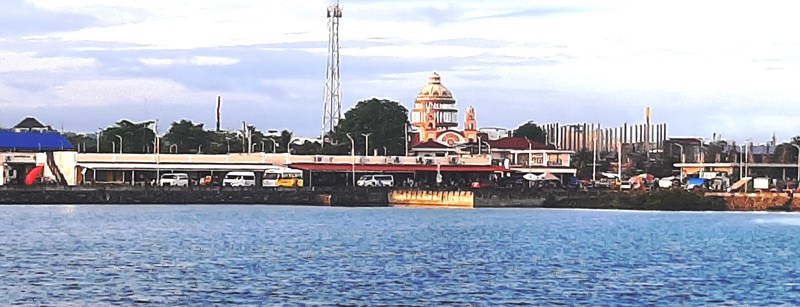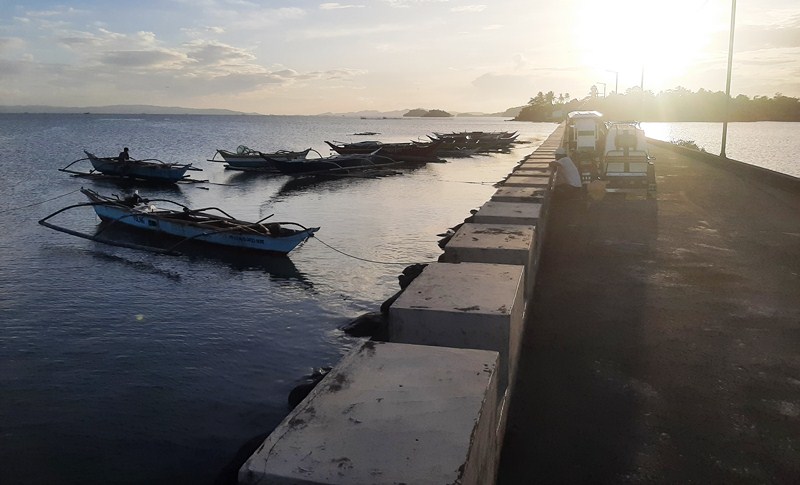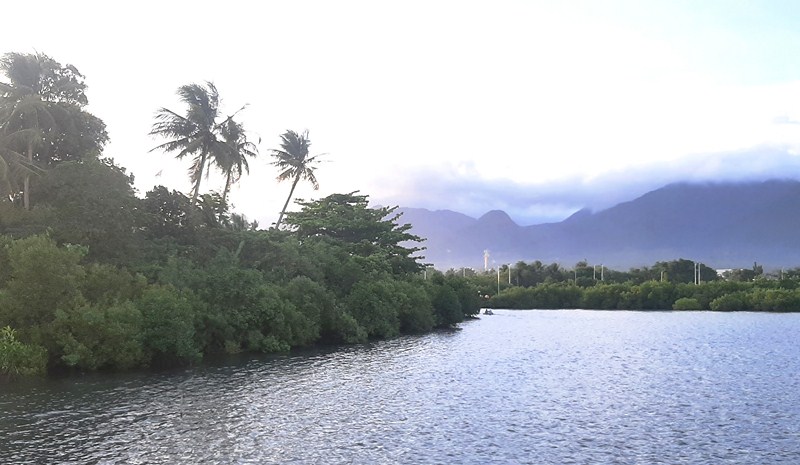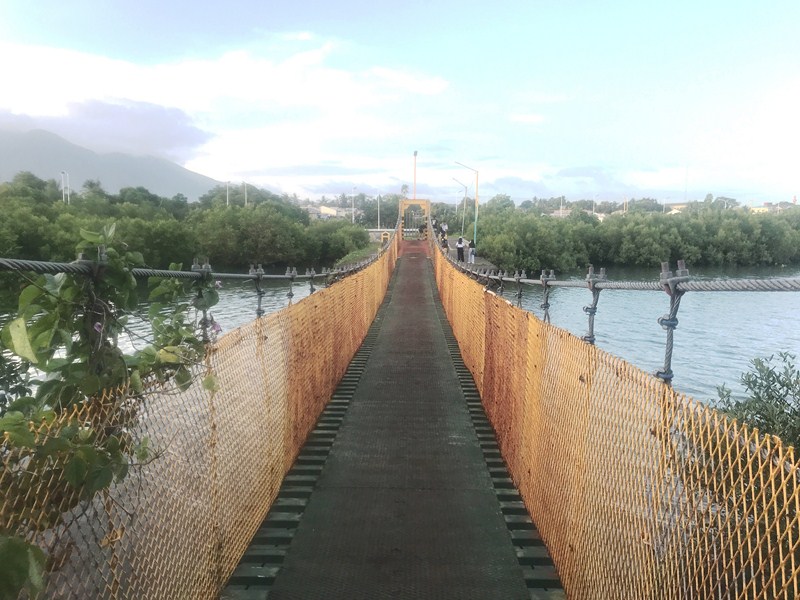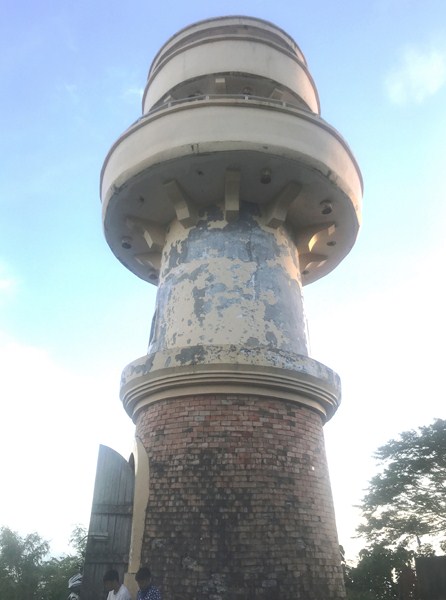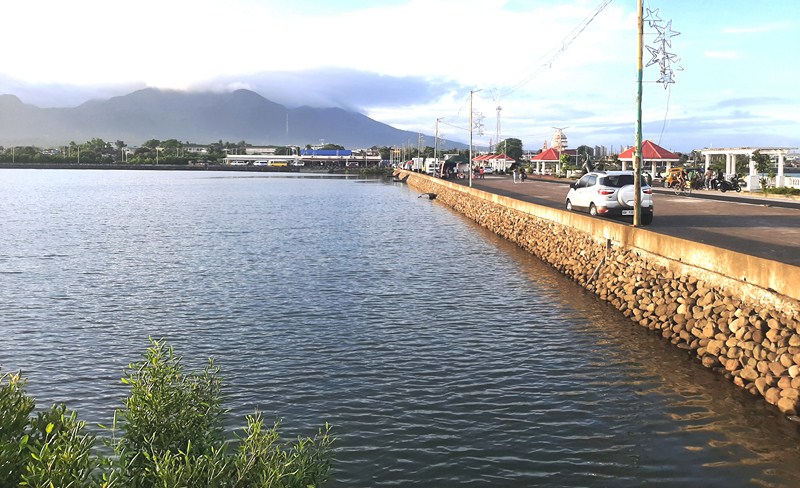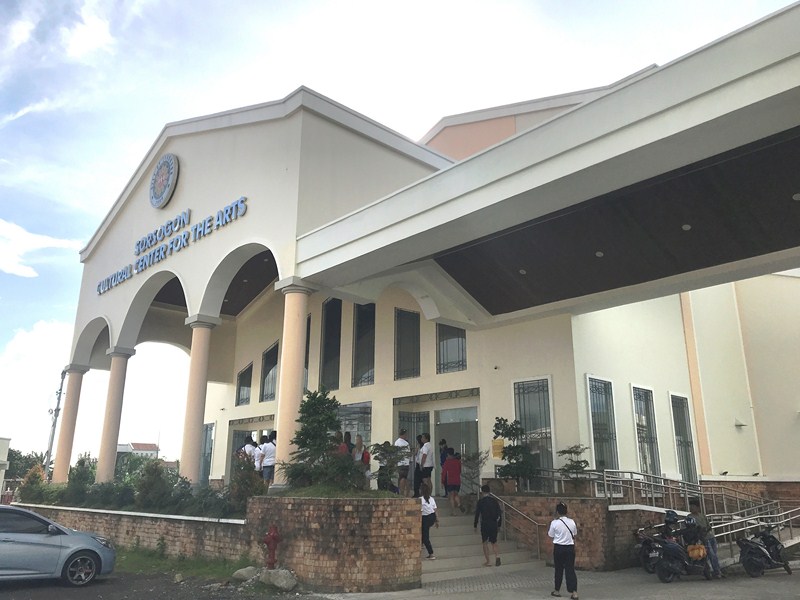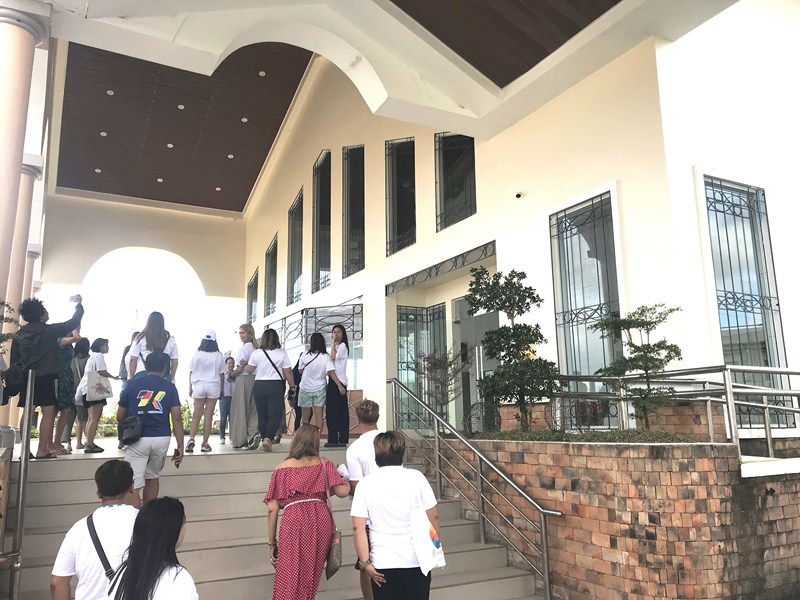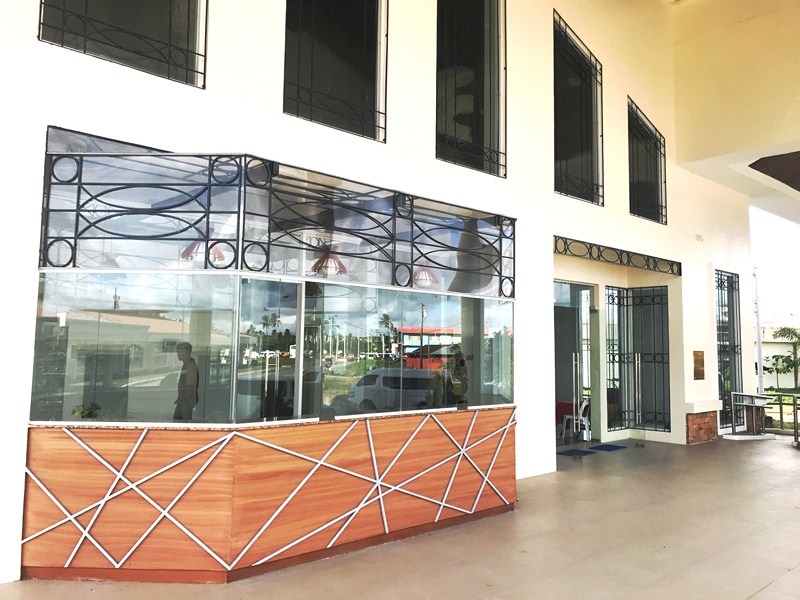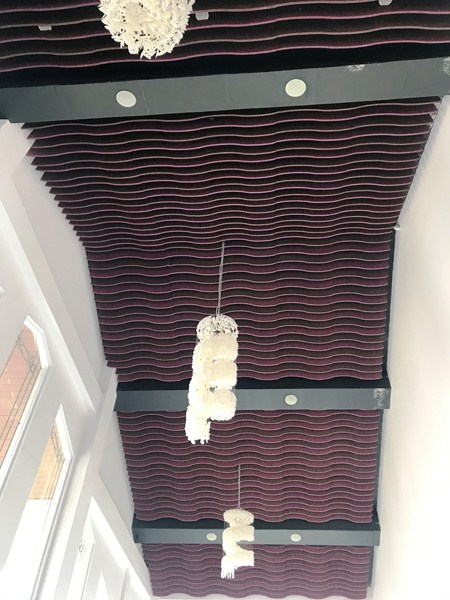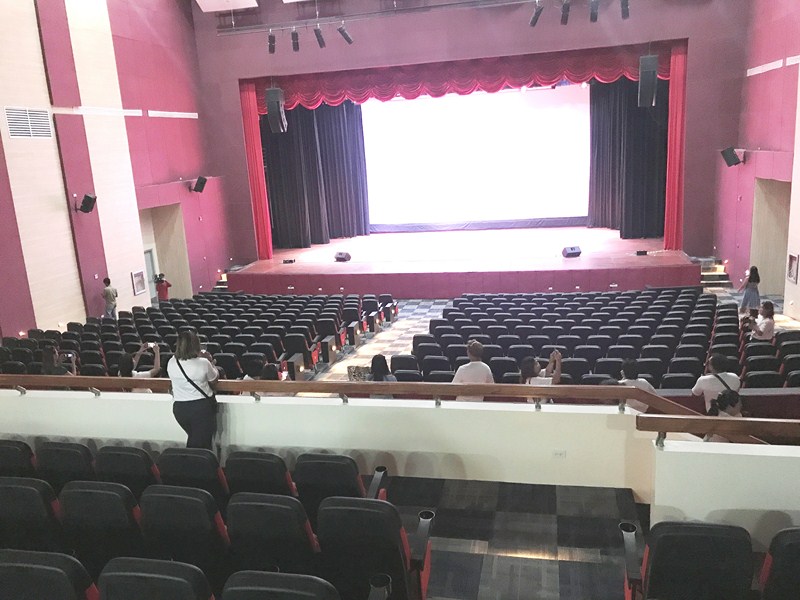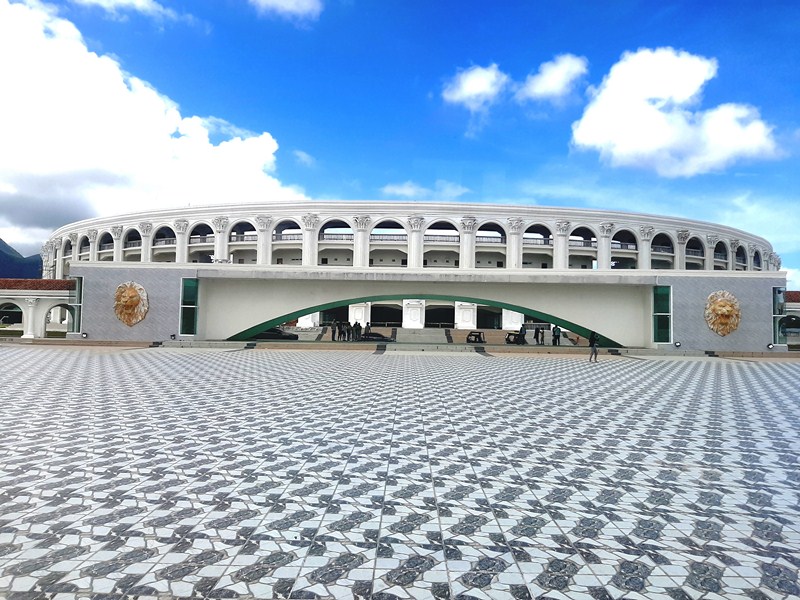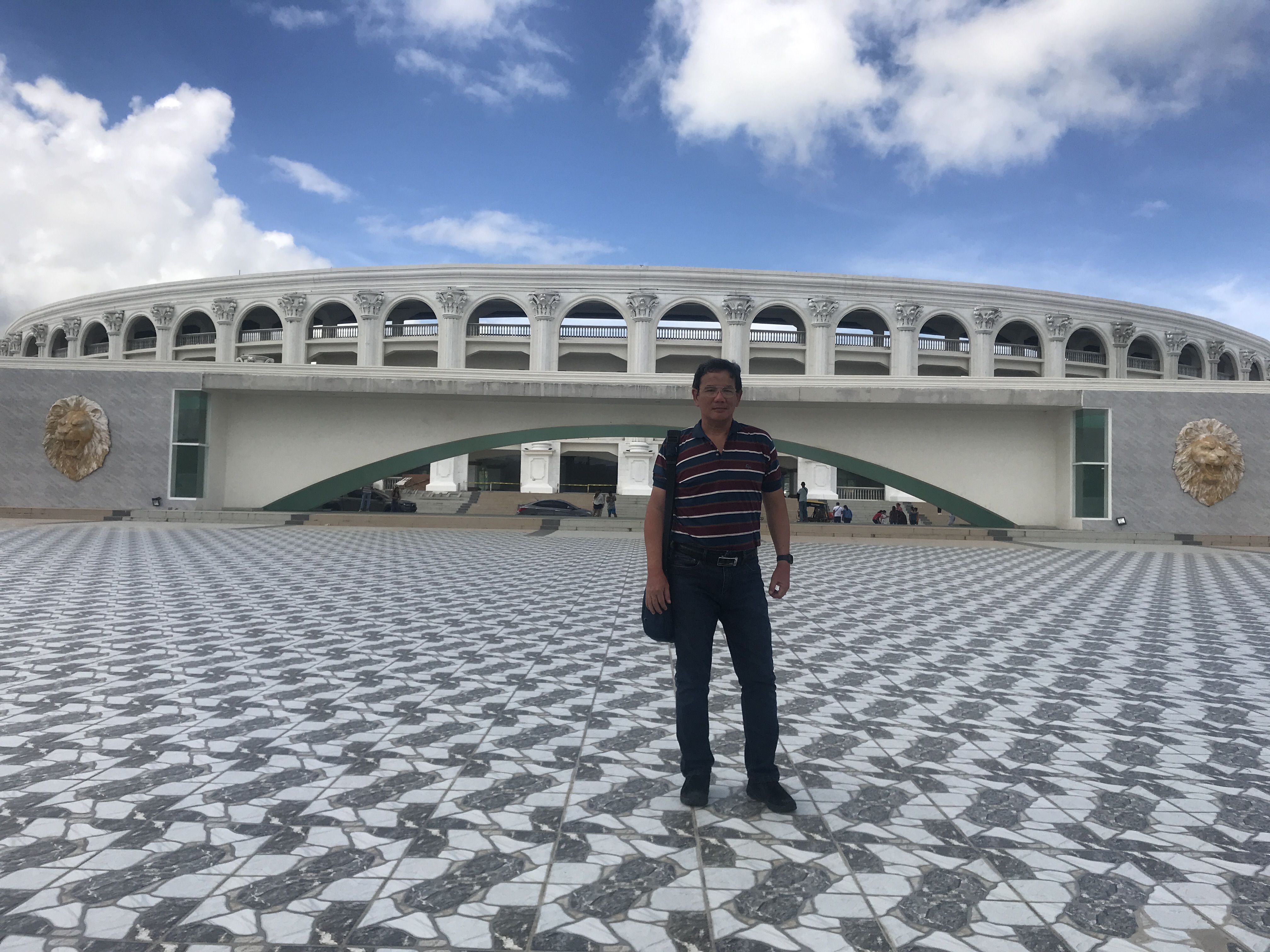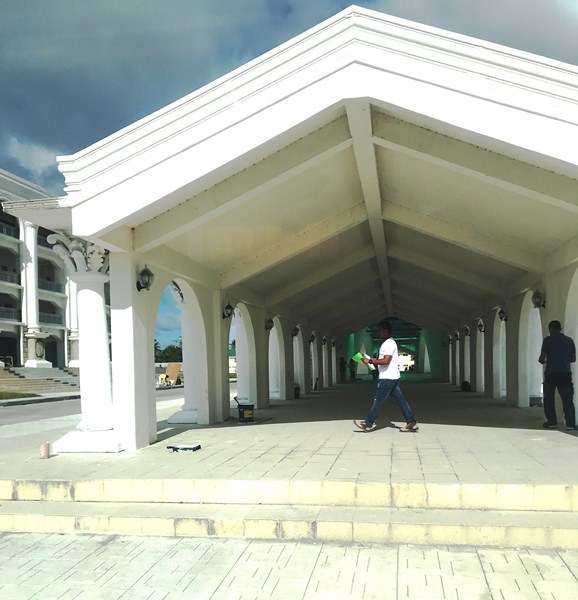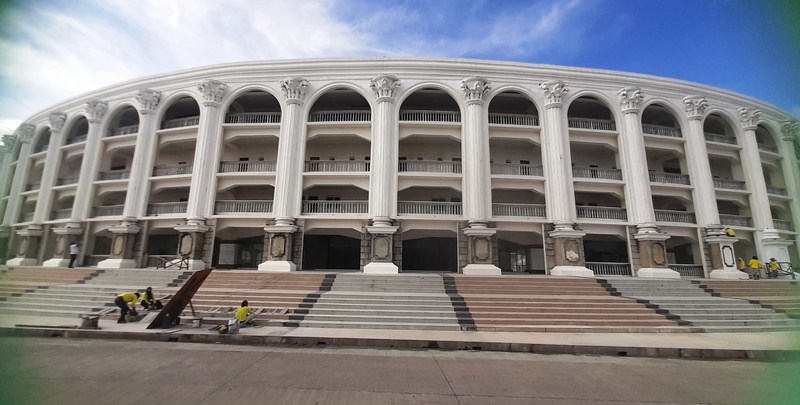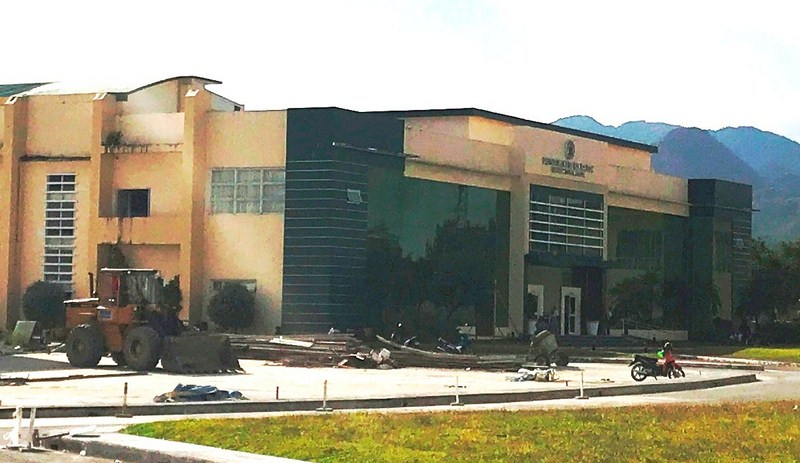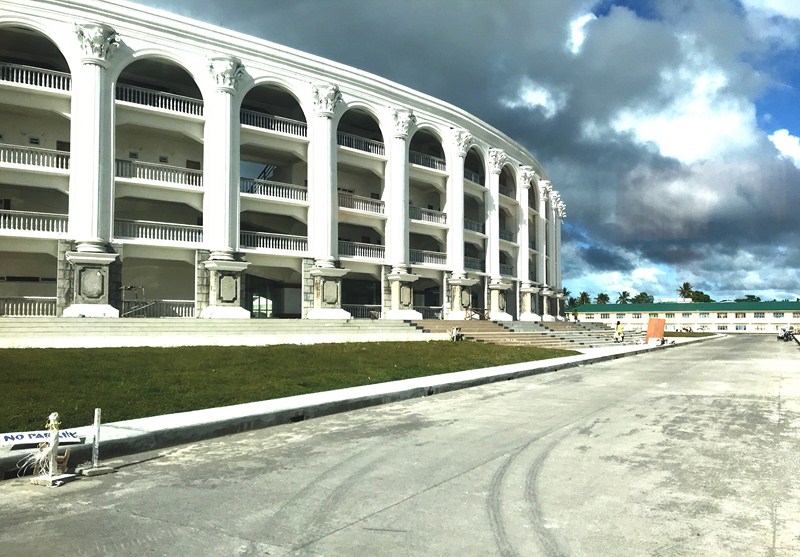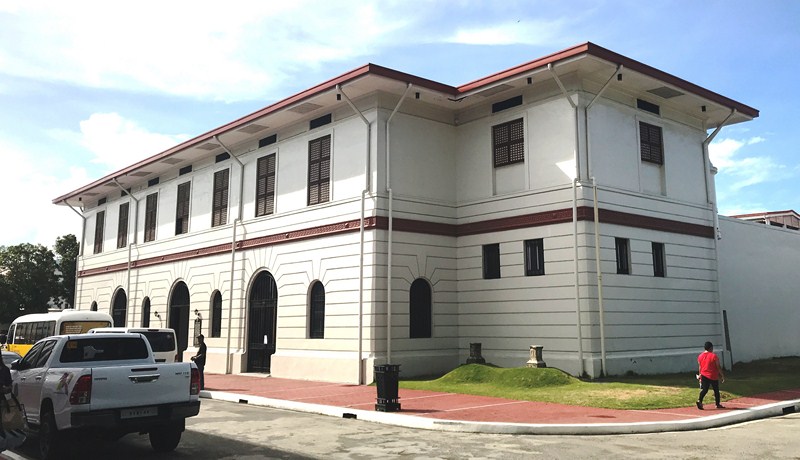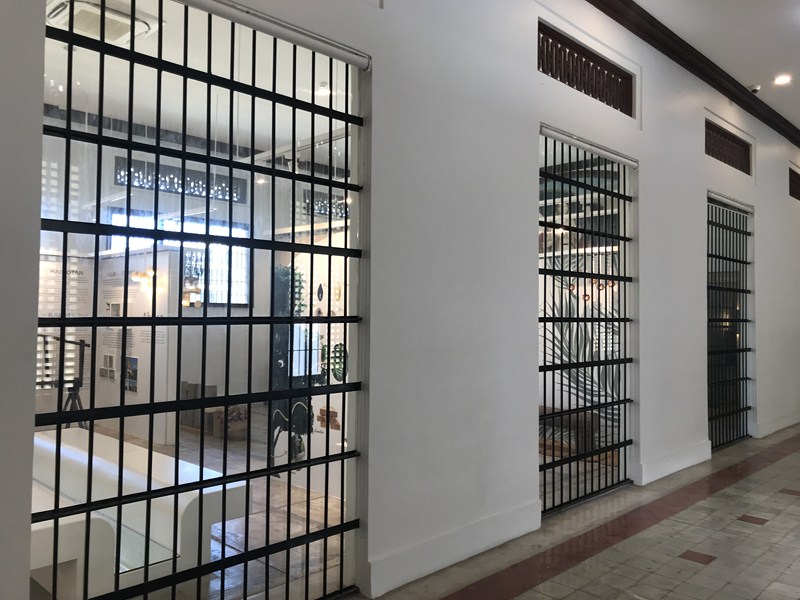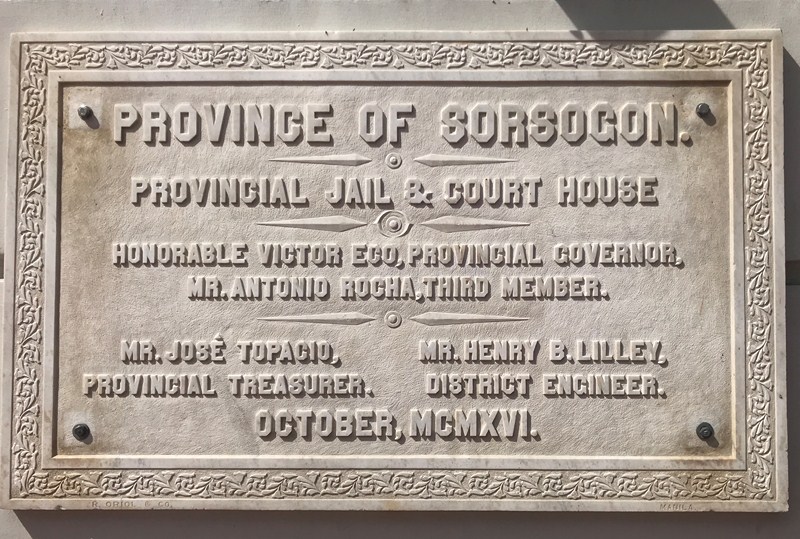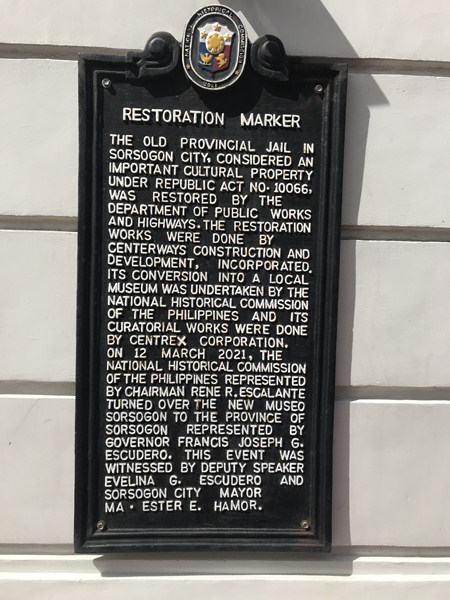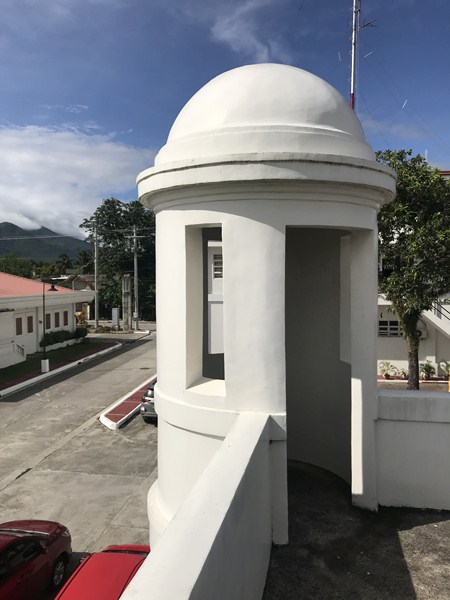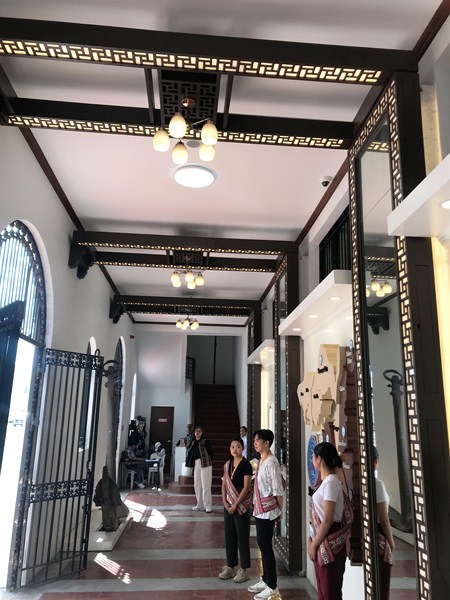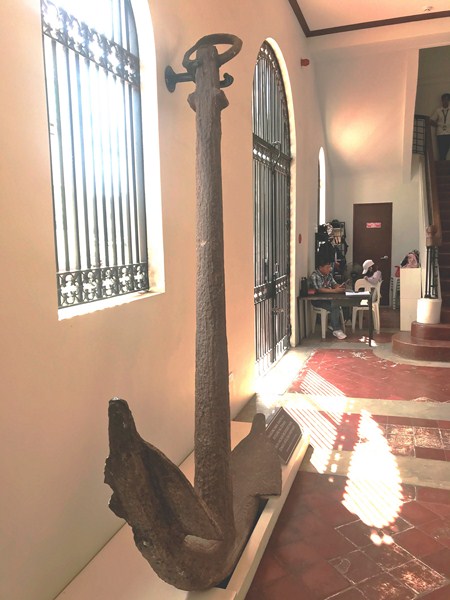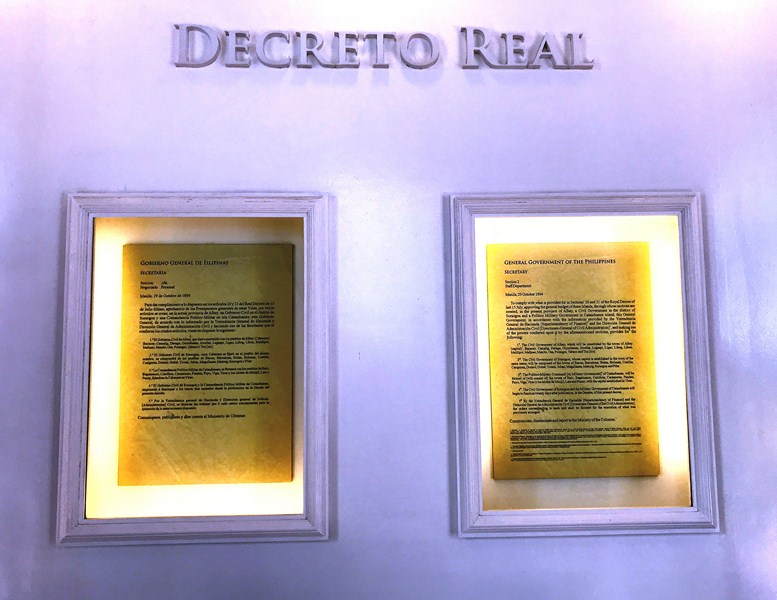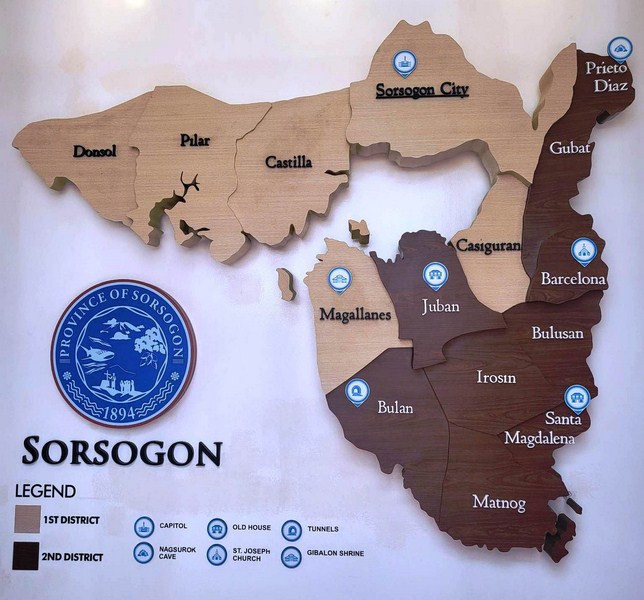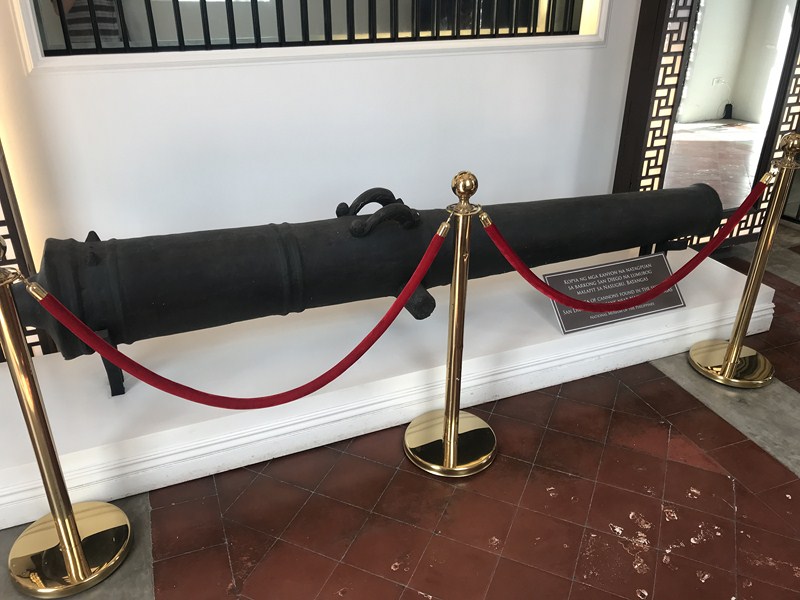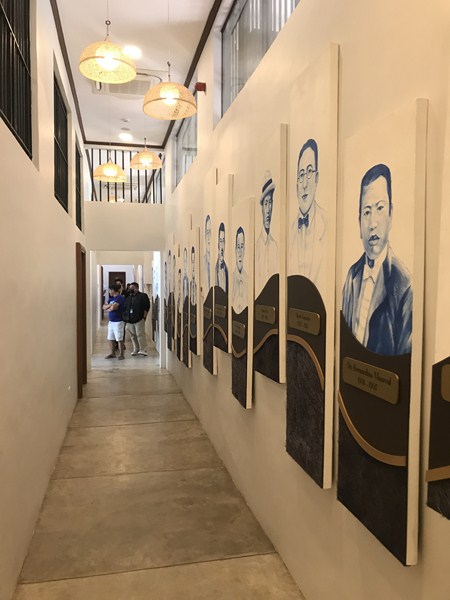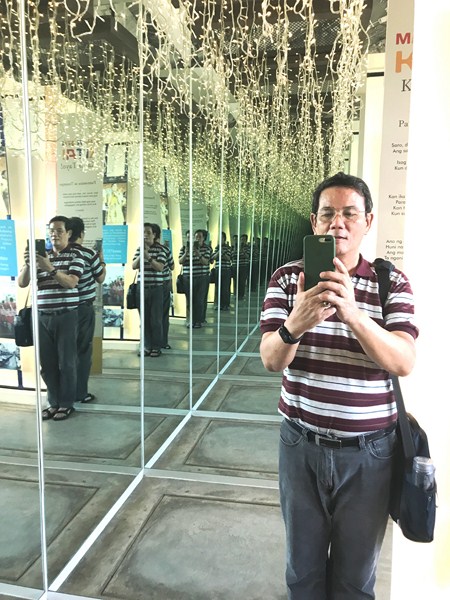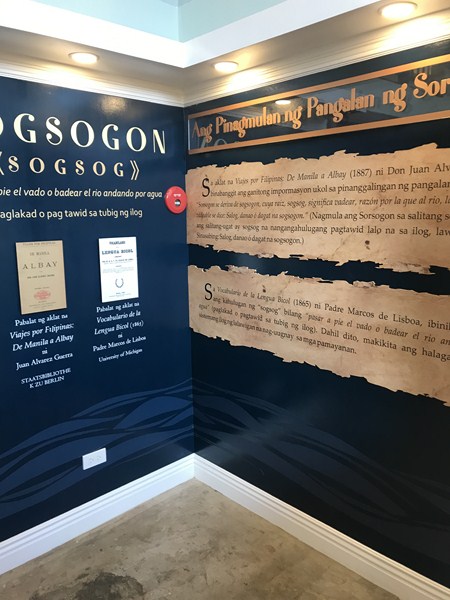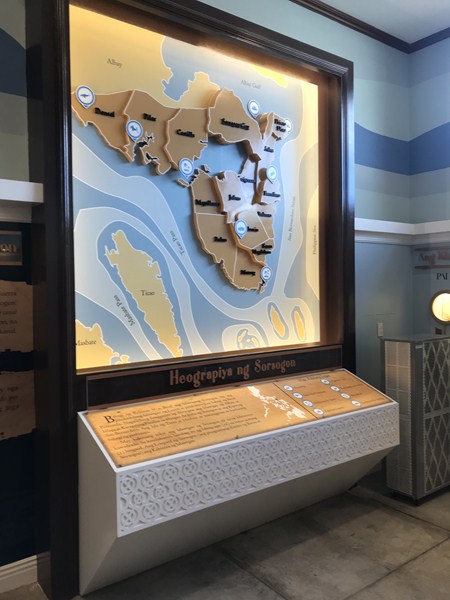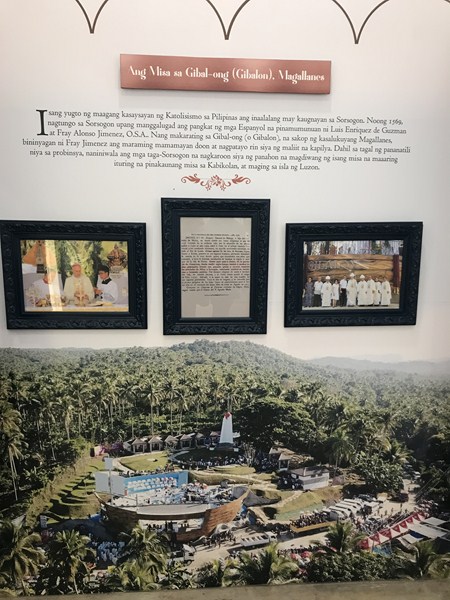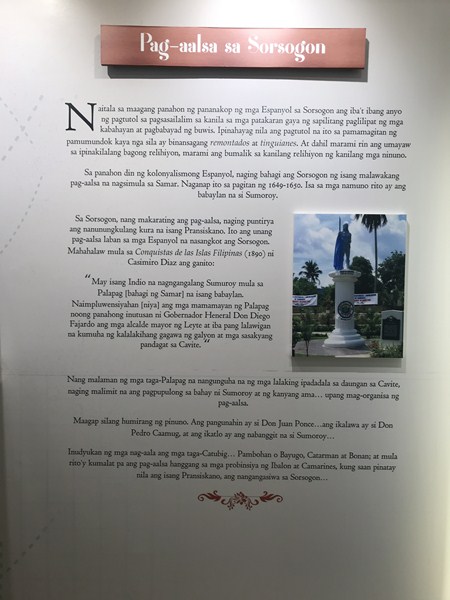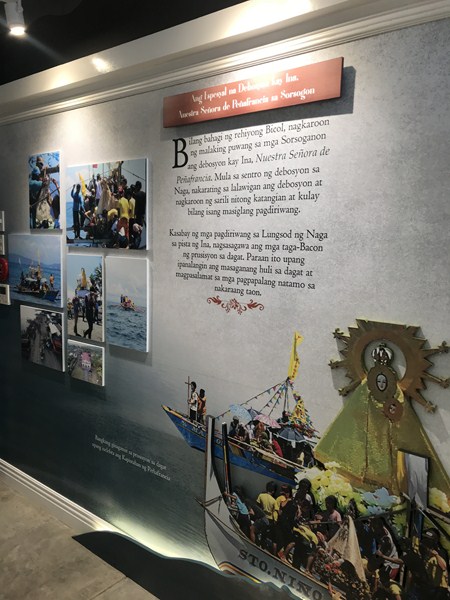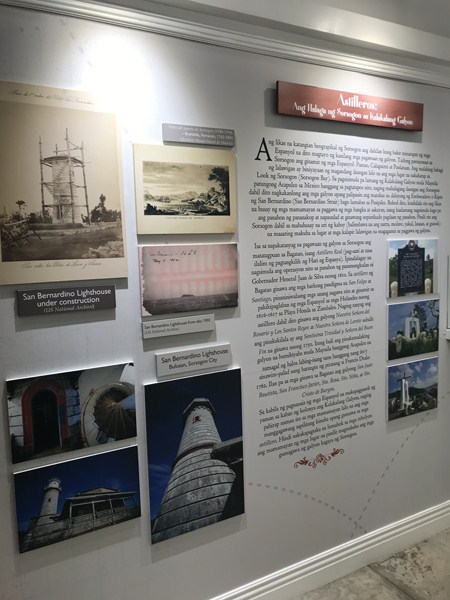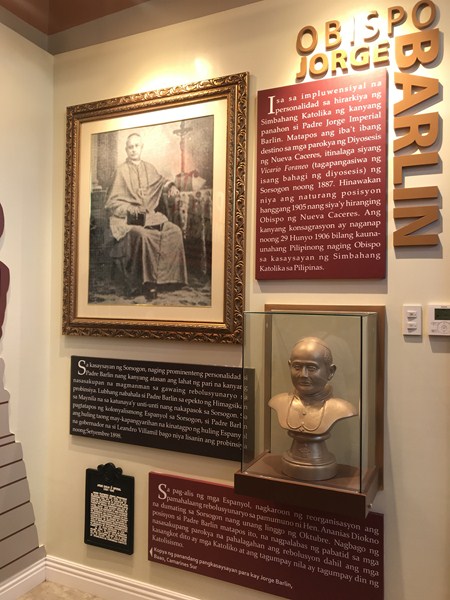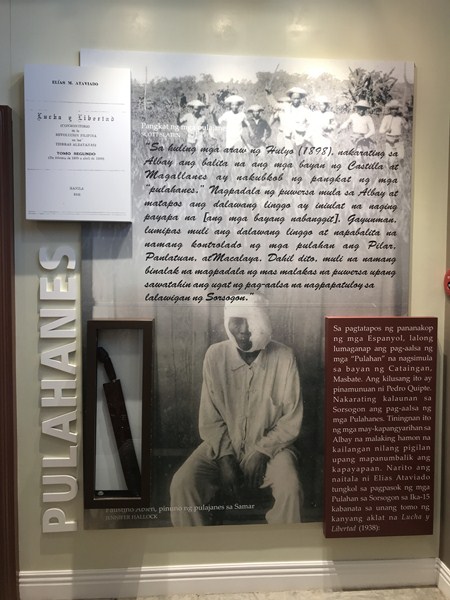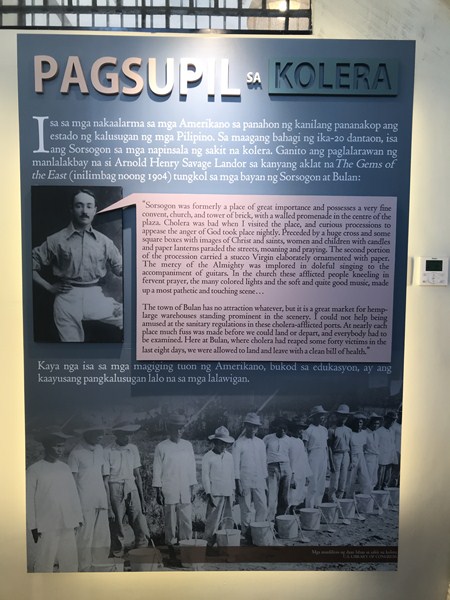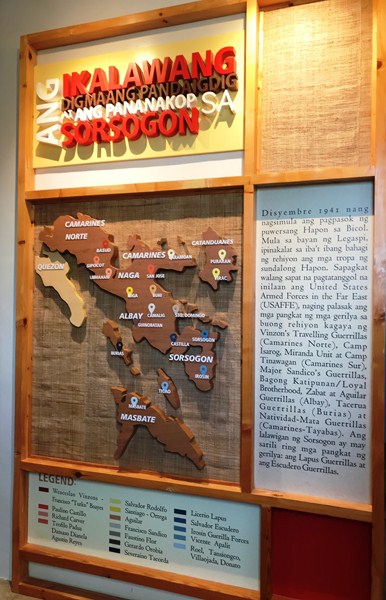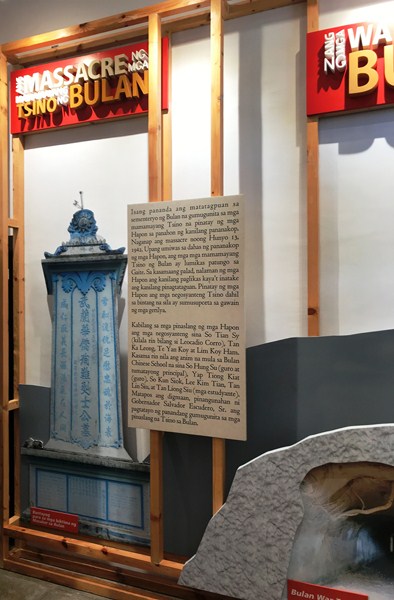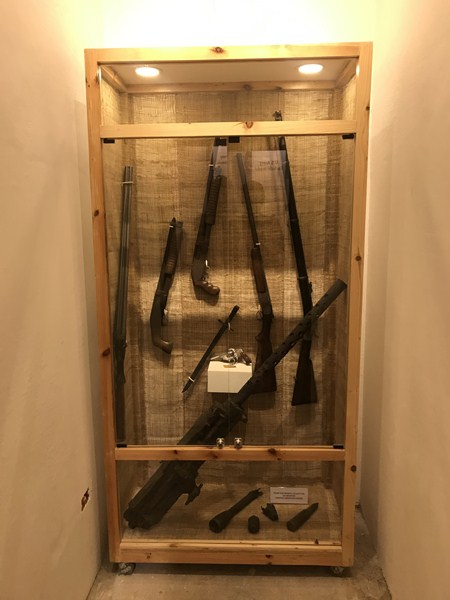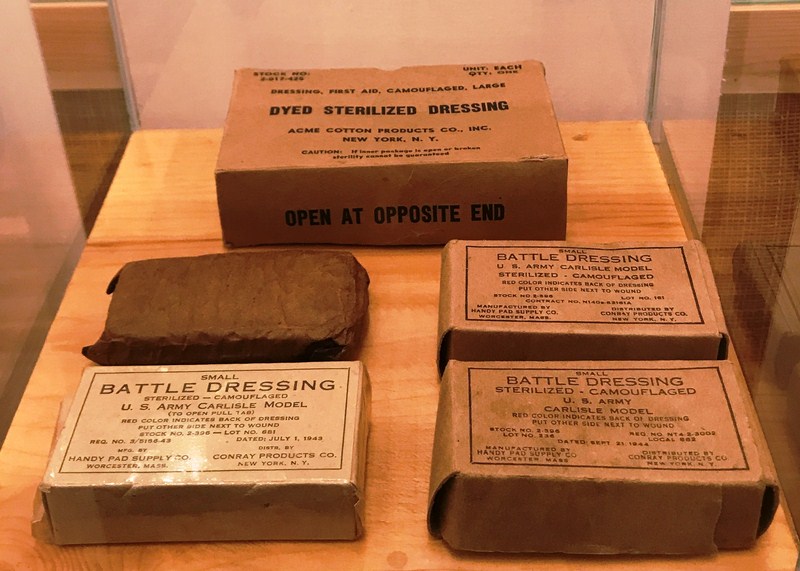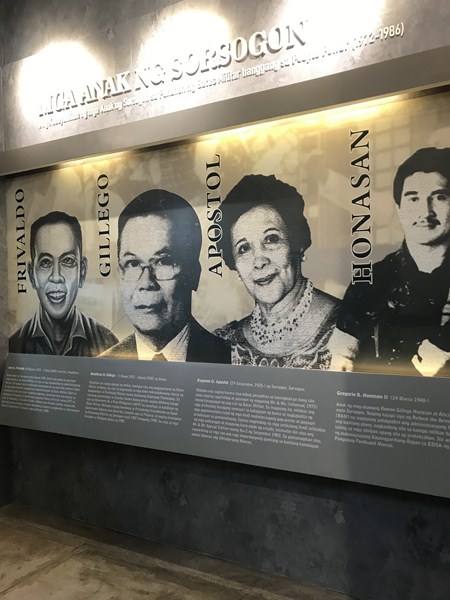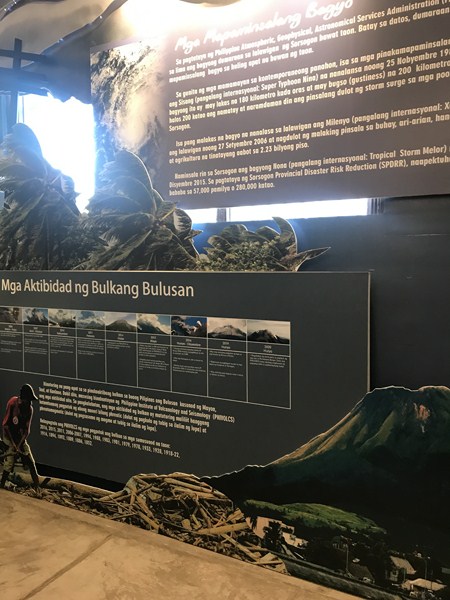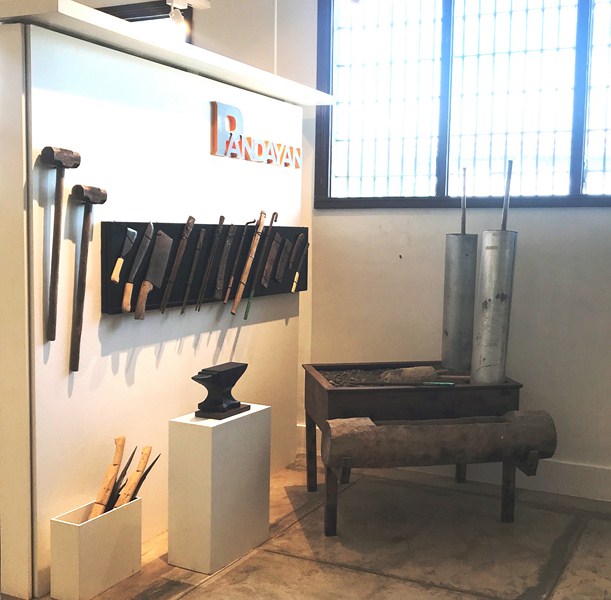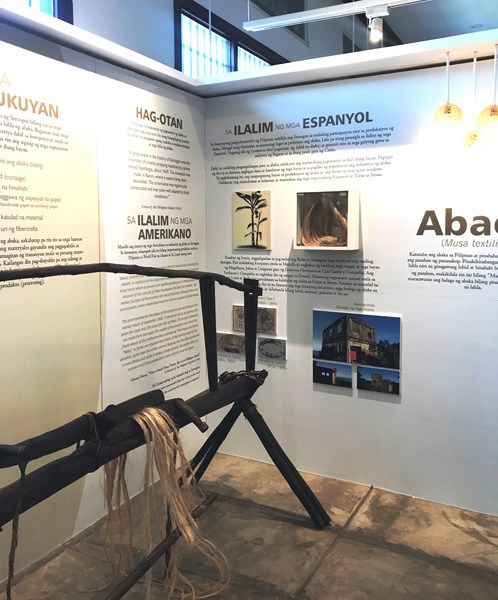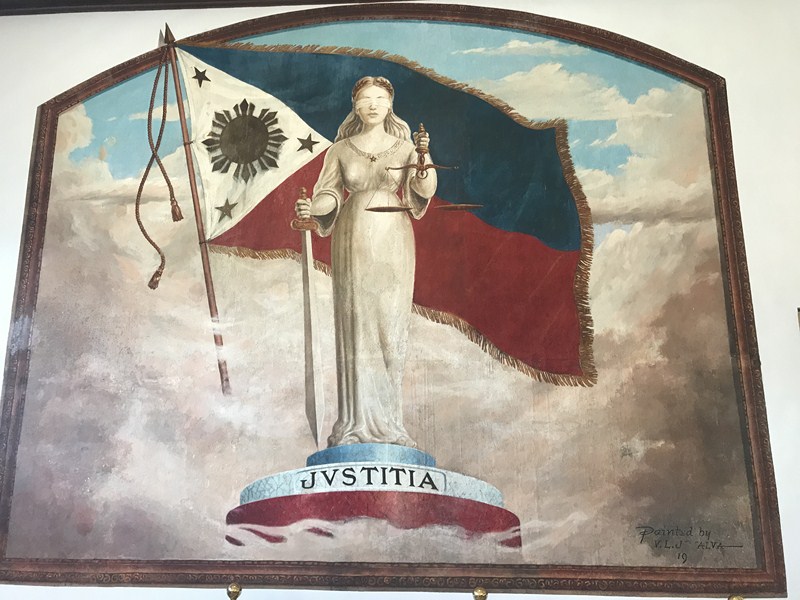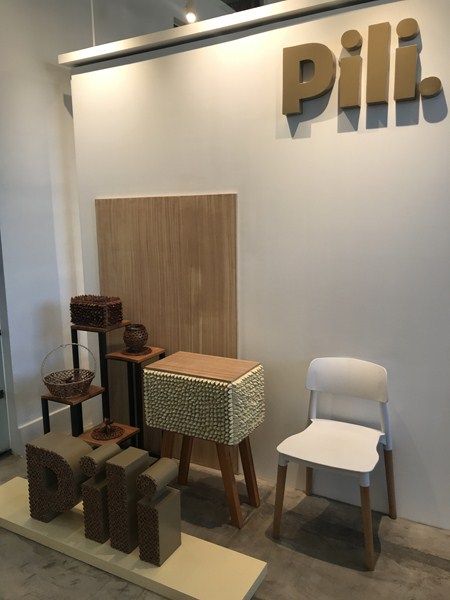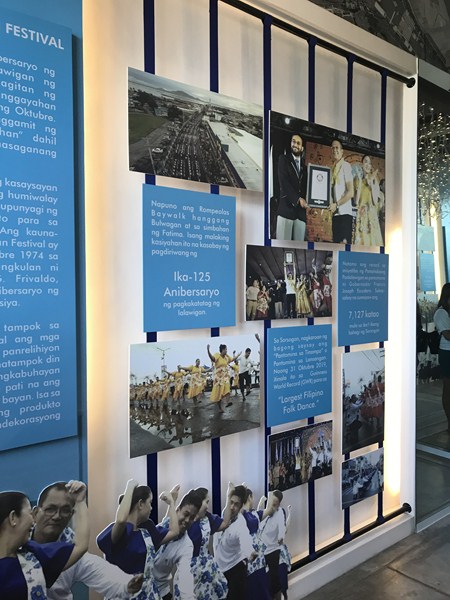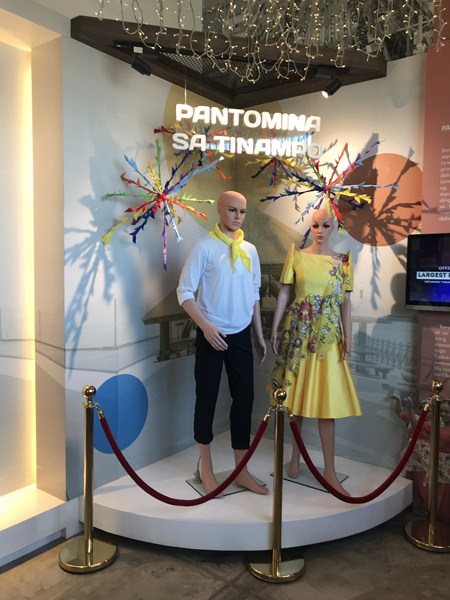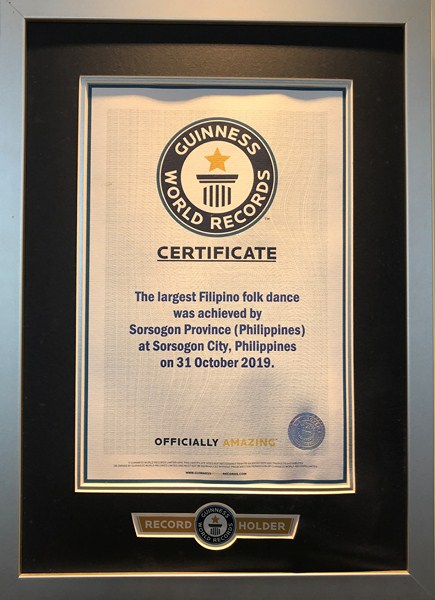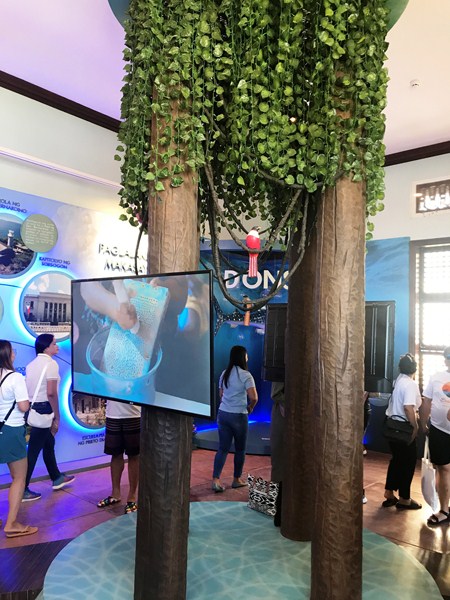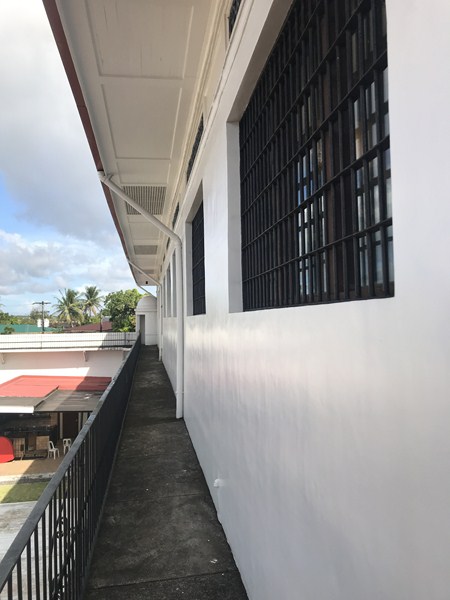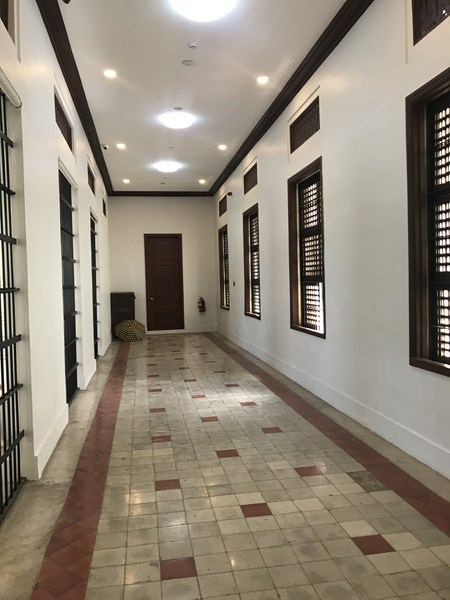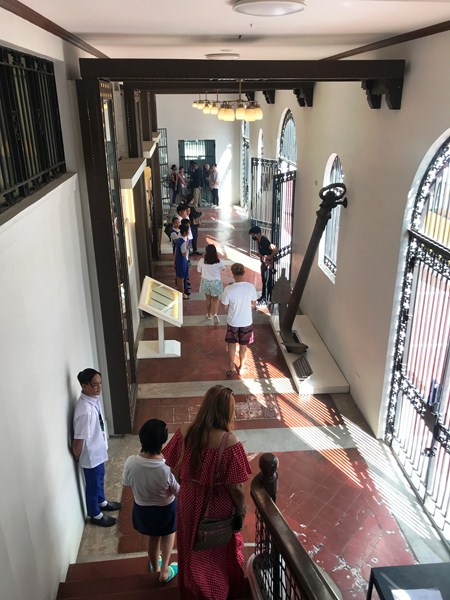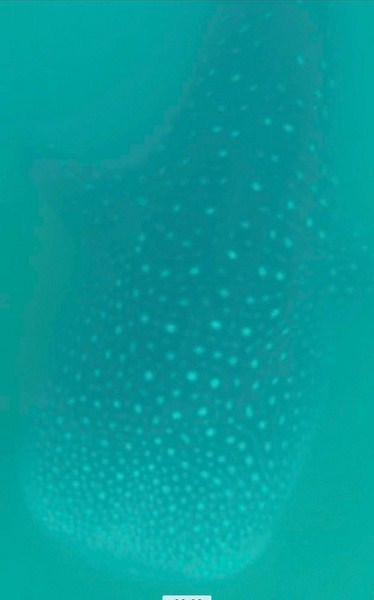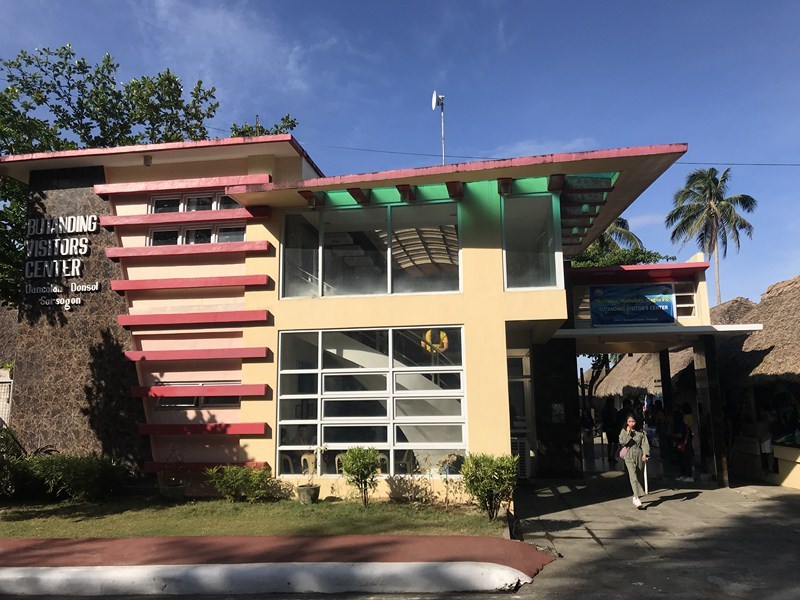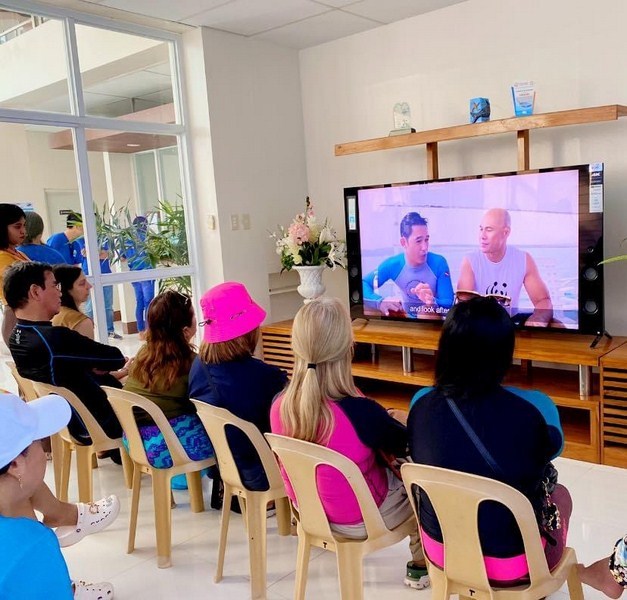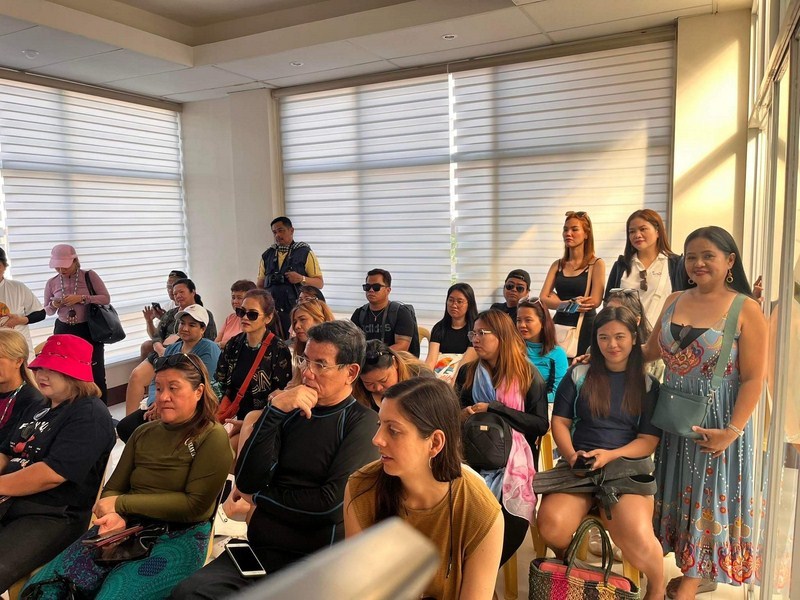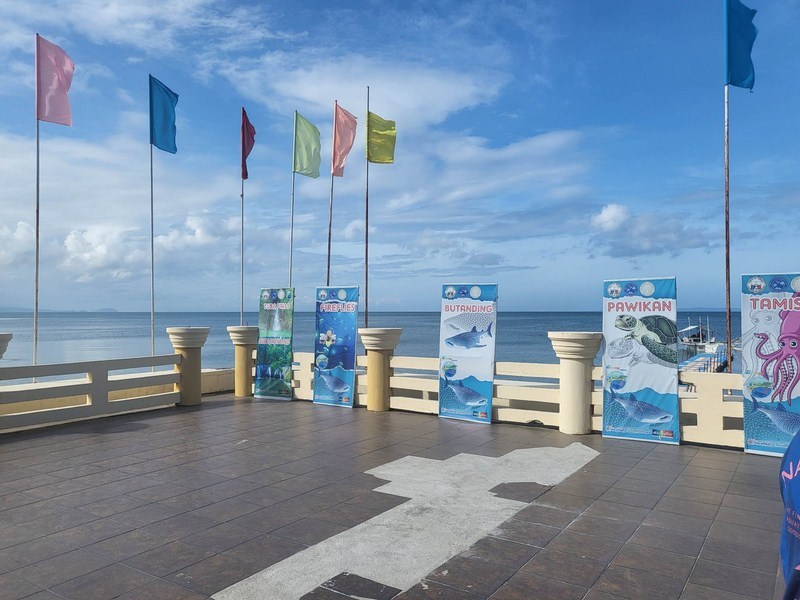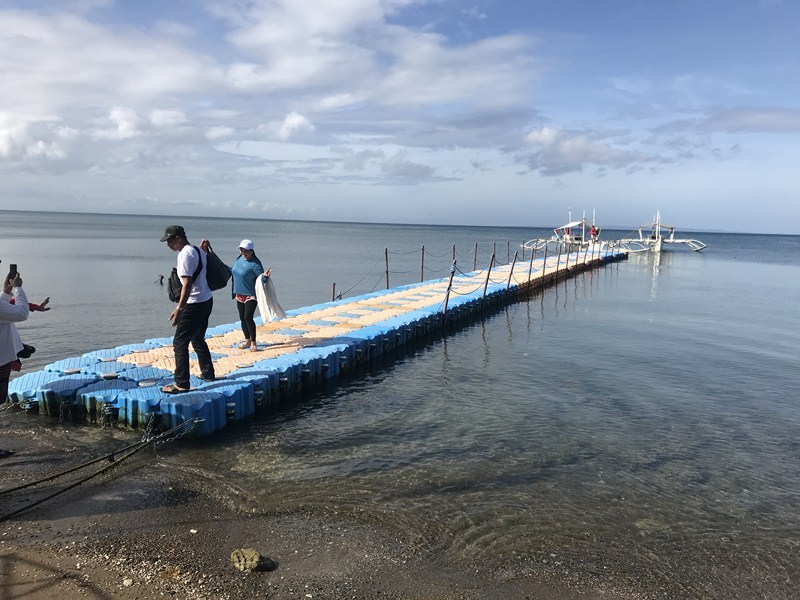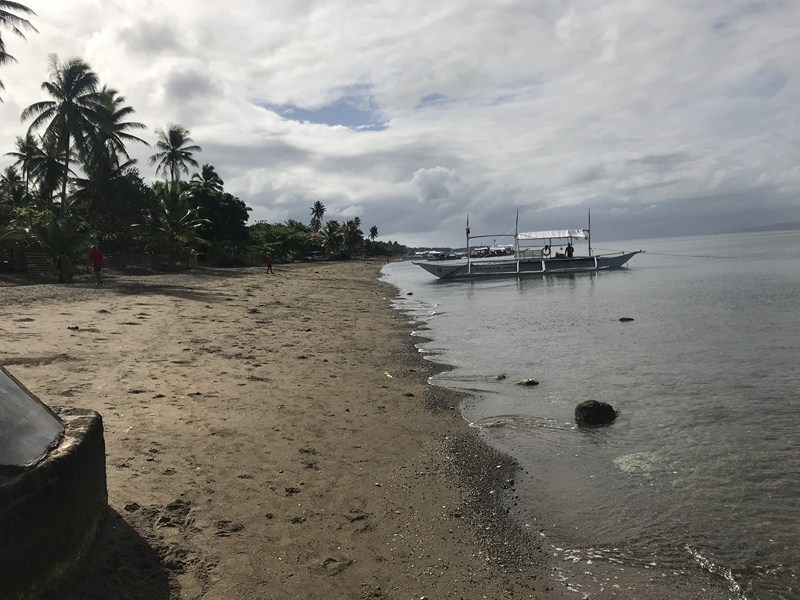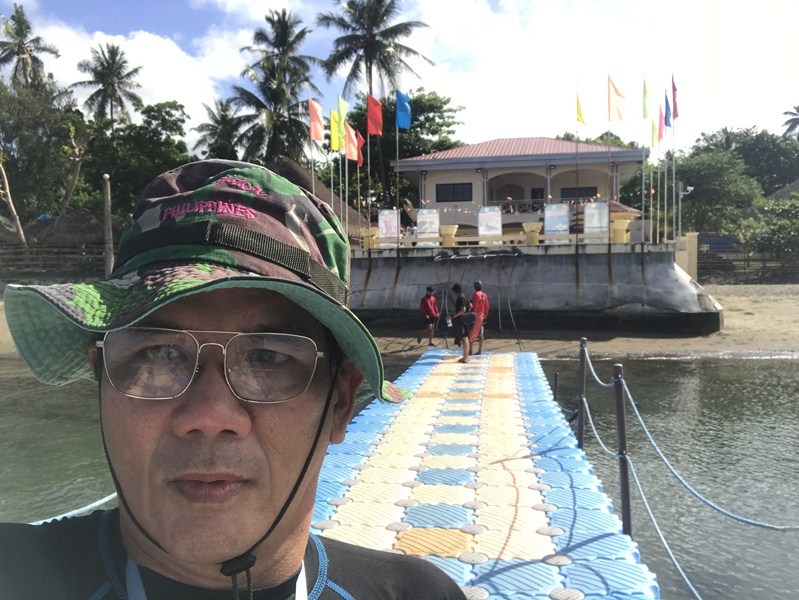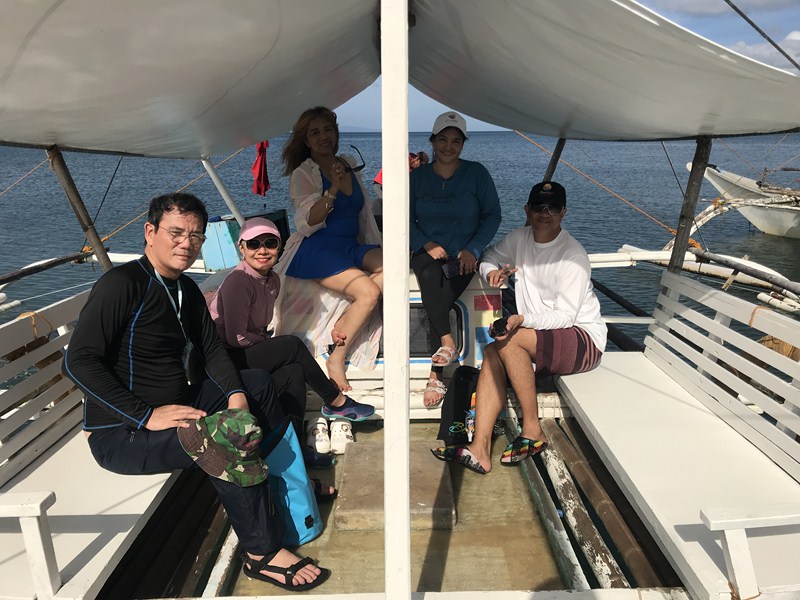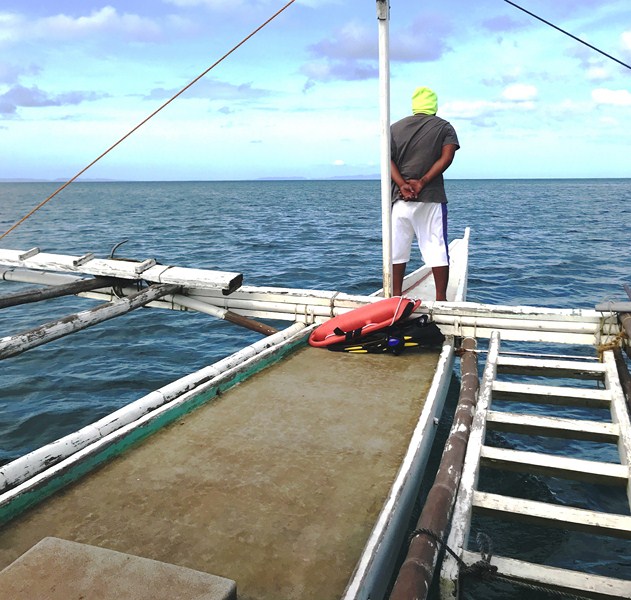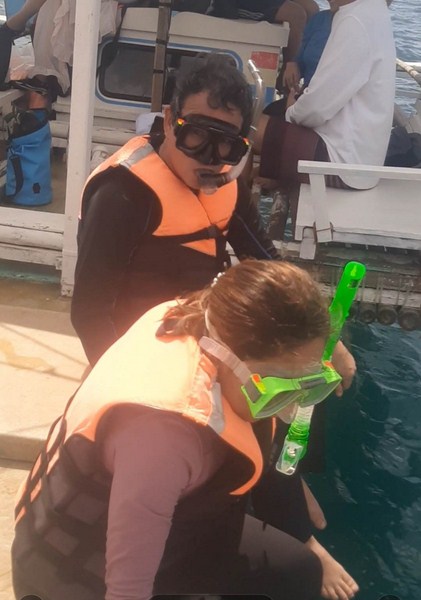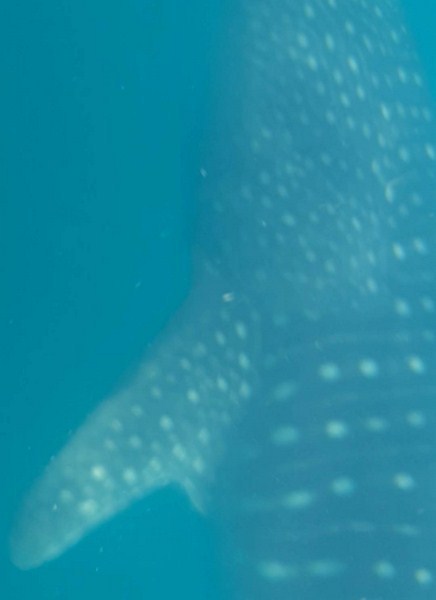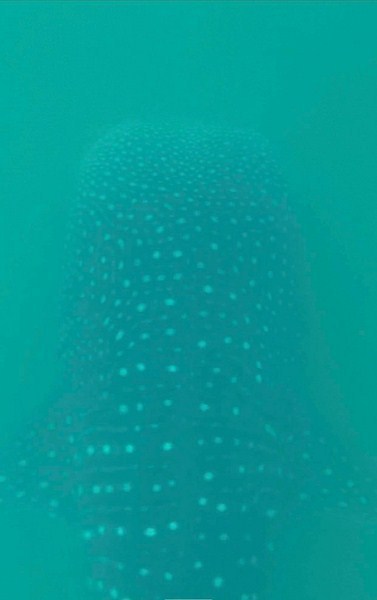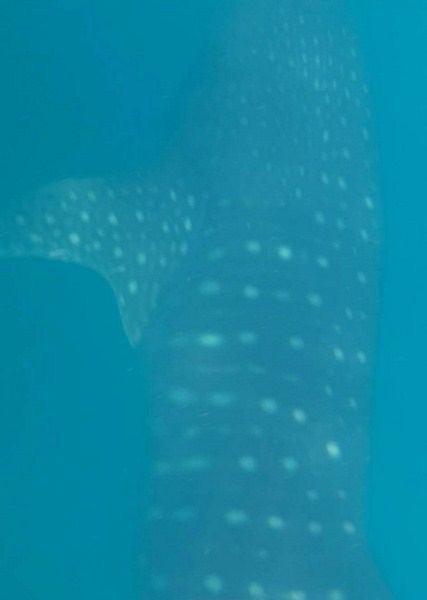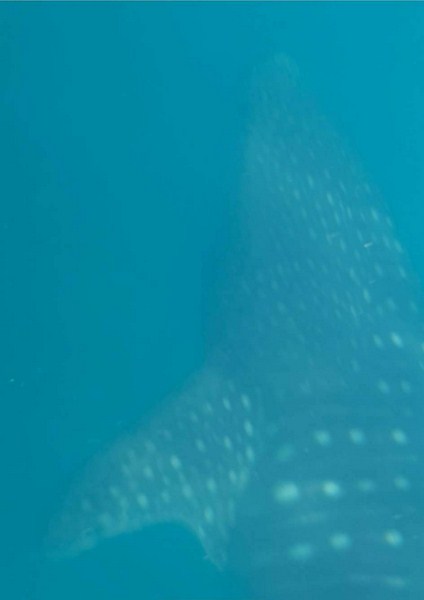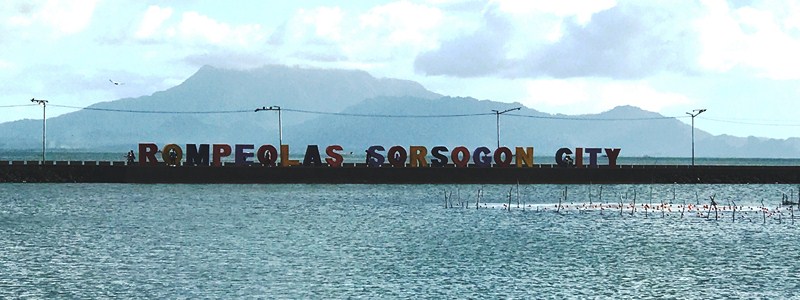
Rompeolas Bay Walk. In the foreground is the standee while in the background is the partially cloud-shrouded Mt. Bulusan
Part of Sorsogon Countryside Tour
After our tour of the Sorsogon Cultural Center for the Arts, we were driven 4 kms. to Rompeolas Bay Walk. Also known as the Sorsogon City Bay Walk, it is located along Sorsogon Bay.
Check out “Sorsogon Cultural Center for the Arts”
Here, we had a merienda of creamy halo-halo at Splendido de Rompeolas Restobar & Grill, one of a number of restaurants at the Rompeolas Food Court that serve breakfast, lunch, dinner and merenda meals. It is being developed by the provincial government as a tourist zone.
Its name was derived from the Spanish word romper meaning “where the waves cavort.” At Rompeolas, Pinaculan Island, the “Rompeolas Sorsogon City” standee as well as picturesque views of Sorsogon Bay and, on a clear day, Mount Bulusan can be seen from afar.
It also has a fairyland view of Sts. Peter and Paul Cathedral, with its colorful, dome and pointed steeples.
The site of the old Sorsogon Pier (which juts into Sorsogon Bay), this pleasant, arrowhead-shaped promenade, with fresh sea air (especially in the morning), gets really crowded with students out on date, kids out on a day of fun (there is a playground), and those who just can’t get enough of the glorious and spectacular, reddish-orange Sorsogon sunset over Pinaculan Island. It is also crowded during sunrise, with people exercising or jogging to start their day.
The adjacent quiet, 3-hectare, tadpole-shaped Pinaculan Island, site of a lighthouse, was once only connected to the mainland, at Brgy. Bitan-o-Dalipay, during low tide.
Today, it is now connected to the mainland via a causeway (built around 2012) and an aesthetically pleasing hanging bridge crossing over to Brgy. Bitan-o-Dalipay.
On October 31, 2019, during Sorsogon’s Kasanggayahan Festival, a total of 7,127 Sorsogon residents, including Gov. Francis ‘Chiz’ Escudero and his wife actress Heart Evangelista, performed the Pantomina sa Tinampo (the Bicolano courtship dance mimicking the movement of doves in courtship) from Fatima Church to Bulwagan and Rompeolas Baywalk. In doing so, Sorsogon now holds a Guinness World Record for the largest Philippine folk dance. Swapnil Dangarikar of India, official adjudicator from Guinness World Records, witnessed the historic performance.
The 4-lane, 5.52-km. long Sorsogon City Coastal Rd., opened last August 30, 2020, connects Rompeolas Bay Walk with Brgy. Balogo. It bypasses Sorsogon City’s main thoroughfare along Maharlika Highway. Providing a pleasant view of Sorsogon’s coastline, it also doubles as a protection against storm surges.
Rompeolas Bay Walk: Brgy. Talisay, Sorsogon City 4700, Sorsogon. Coordinates 12.96481,124.0041.
Splendido de Rompeolas Restobar & Grill: Pier Site, Rompeolas, Brgy. Talisay, Sorsogon City 4700, Sorsogon. Mobile number: (0912) 105-9950.
How to Get There: Sorsogon City is located 517.5 kms. (a 12–hr. drive) from Manila via the Pan-Philippine Highway/AH26.
Sorsogon Provincial Tourism Culture and Arts Office: Ground Floor, Capitol Building, 4700 Sorsogon City. Mobile number: (0968) 624-6279. E-mail: tourism@sorsogon.gov.ph
Ur Place Travel & Tours: OLV Pangpang, Sorsogon City, Sorsogon. Mobile number (Viber): (0927) 950-3927 (Ms. Annie Gueb). Facebook: www.facebook.com/urplacetravel

